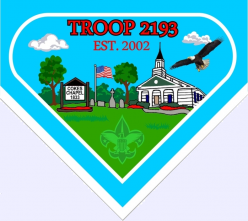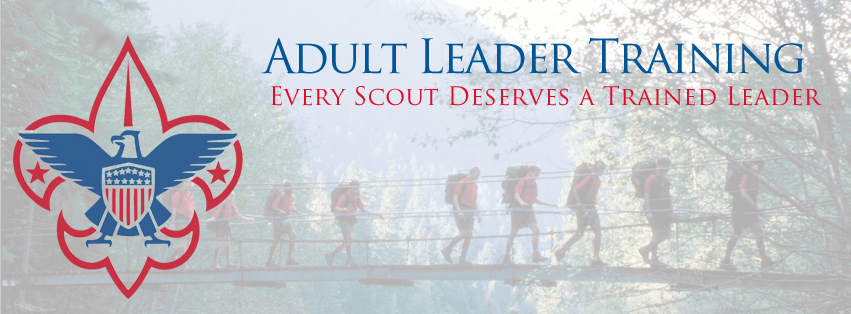
WHY TRAINING? 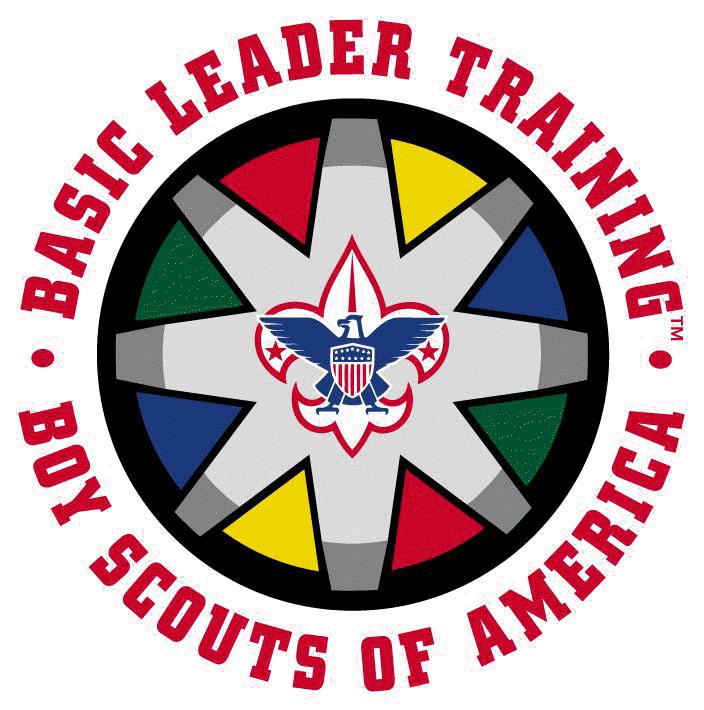
Training shows new leaders how to do their jobs and allows for an interchange of ideas with more experienced leaders. Every Scout deserves qualified, trained leaders who will provide the best program possible, the way it is intended. Trained leaders ensure that the goals of Scouting are met. The leadership‐training program of the BSA provides this information and helps leaders become confident in carrying out their responsibilities.
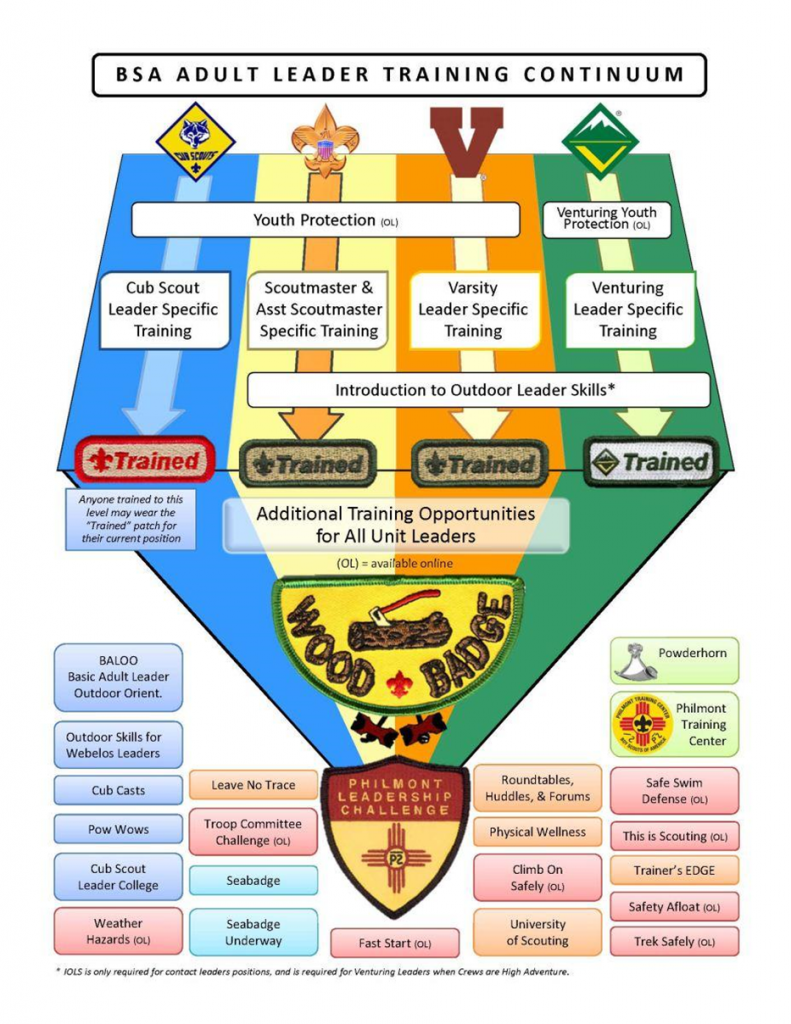
THE VALUE OF TRAINING
As an adult leader of Cub Scouts, Boy Scouts, or Venturing you will be required to complete Basic Training for your position. You don’t have to muddle your way through in a haphazard manner, taking the risk that your youth members will miss some of the most important aspects of Scouting and perhaps even become disinterested enough to drop out. You will participate in training and make the commitment to learn all you can about your responsibilities so you can become an effective leader.
The leadership training program of the Boy Scouts of America gives you what you need to do your job well. The confidence you gain through training will allow you to spend more energy delivering a quality program, and less energy in worry and confusion. You’ll meet other leaders and trade ideas with them, and develop new friendships that will endure long after the training session has ended. You’ll learn where to go for advice. You’ll also have fun, at the training sessions and also when you use what you’ve learned with your unit.
The Training Committee of Flint River Council Council is dedicated to providing every Scouting leader with the knowledge, skills, and attitude required to carry out Scouting’s mission. The Committee organizes training experiences throughout the year to provide basic knowledge, and then build on that knowledge. Through these training sessions, you’ll have a chance to develop into the best leader you can be.
The Boy Scouts of America also conducts a recognition program for leaders who participate in training courses and apply their knowledge to their Scouting jobs. Detailed lists of requirements are available from the Council Office or from the Council Training Committee. (See Web Page on Adult Leader Knots)
WHAT MAKES A TRAINED LEADER?
• Scoutmasters and assistant Scoutmasters are considered trained when they have completed Fast Start, Youth Protection, This Is Scouting, Scoutmaster and Assistant Scoutmaster Leader Specific Training, and Introduction to Outdoor Leader Skills. (*) S11 Introduction to Outdoor Leader Skills (IOLS) is an outdoor training requirement for Scoutmasters and All Assistant Scoutmasters to be considered “TRAINED”.

What is Introduction to Outdoor Leader Skills (IOLS)
This course is required for Webelos Leaders, Boy Scout Leaders and Venturing Leaders whose crews have an outdoor program. Introduction to Outdoor Leader Skills is a fun filled program of hands-on skills training in the outdoors, designed to help you master basic camp skills required for Tenderfoot to First Class. Instructors will help you learn how to set up camp, cook, work with woods tools and about ropes, first aid, planning campfire programs, map reading and compass skills, hiking and packing techniques, nature identification, and Leave No Trace.
Each outdoor session will bring to life the pages of the Boy Scout Handbook to help you deliver the promise of Scouting to yourself and the youth you serve. It will increase your comfort level and give you confidence as a trained, skilled leader. The program will also give you the opportunity to work with other Scout leaders from your area, meet new friends, and reinforce skill techniques with fellow unit leaders. This course consists of an indoor planning meeting and an outdoor overnight experience. Participants must complete both sections. It is offered by the council in the fall and the spring.
• Troop committee members are considered trained when they have completed Fast Start, Youth Protection, This Is Scouting and the Troop Committee Challenge as their Leader Specific training.

AND IF YOU WANT MORE FUN TRY WOOD BADGE FOR THE 21st CENTURY
Upon completion of Basic Training, an adult is eligible to attend Wood Badge. As the core leadership skills training course for the BSA, Wood Badge focuses on strengthening every volunteer’s ability to work with and lead groups of youth and adults and is less focused on outdoor skills, which are more effectively addressed in other courses.
Wood Badge is advanced training in leadership skills for all adults in BSA programs. Leaders in Cub Scouting, Boy Scouting, Varsity Scouting, Venturing, and Commissioner Service are invited to participate in Wood Badge.
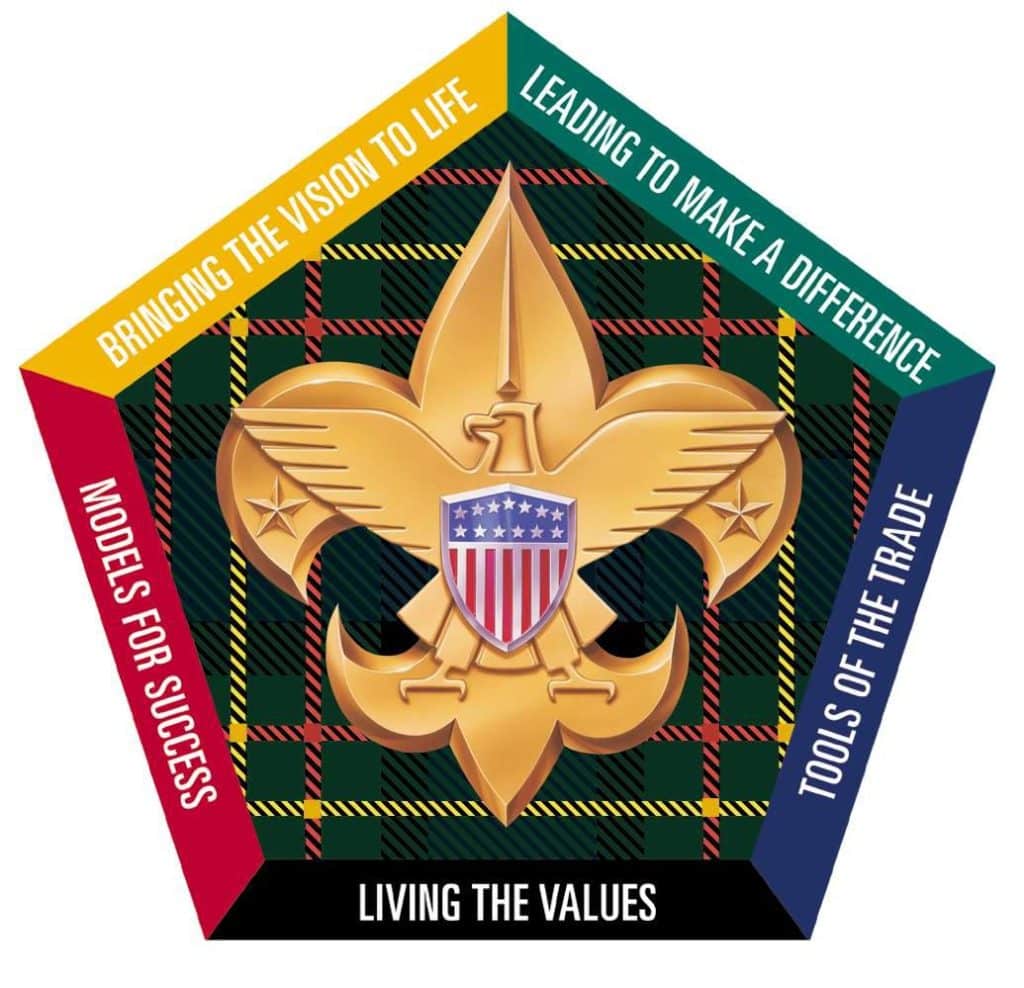 This advanced training is presented in two parts:
This advanced training is presented in two parts:
1. An advanced learning experience presented over two long (three-day) weekends.
2. An application phase of several months during which the leaders apply the specific skills they have learned at Wood Badge to their Scouting responsibilities.
Leaders who successfully complete both parts of the training are recognized with the Wood Badge beads, woggle slide, and neckerchief.
To be eligible to participate in Wood Badge training, leaders must first complete Basic Leader Training. It is the goal of the BSA that every leader attend Wood Badge within two years of registering as an adult leader.
